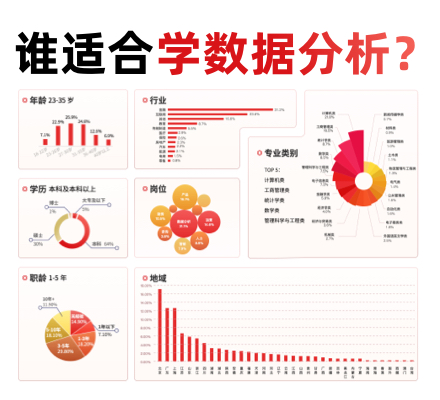多层感知器中的正则化¶
比较合成数据集上正则化参数“alpha”的不同值。 该图显示不同的alpha产生不同的决策函数。
Alpha是正则化项(也称为惩罚项)的参数,它通过限制权重的大小来防止过度拟合。 增加alpha可能会通过鼓励较小的权重来解决大方差(过度拟合的迹象),从而导致决策边界图以较小的曲率出现。 同样,降低alpha值可能会通过鼓励更大的权重来解决高偏差(欠拟合的迹象),从而可能导致决策边界更加复杂。
print(__doc__)
# 作者: Issam H. Laradji
# 执照: BSD 3 clause
import numpy as np
from matplotlib import pyplot as plt
from matplotlib.colors import ListedColormap
from sklearn.model_selection import train_test_split
from sklearn.preprocessing import StandardScaler
from sklearn.datasets import make_moons, make_circles, make_classification
from sklearn.neural_network import MLPClassifier
from sklearn.pipeline import make_pipeline
h = .02 # 网格中的步长
alphas = np.logspace(-5, 3, 5)
names = ['alpha ' + str(i) for i in alphas]
classifiers = []
for i in alphas:
classifiers.append(make_pipeline(
StandardScaler(),
MLPClassifier(solver='lbfgs', alpha=i,
random_state=1, max_iter=2000,
early_stopping=True,
hidden_layer_sizes=[100, 100])
))
X, y = make_classification(n_features=2, n_redundant=0, n_informative=2,
random_state=0, n_clusters_per_class=1)
rng = np.random.RandomState(2)
X += 2 * rng.uniform(size=X.shape)
linearly_separable = (X, y)
datasets = [make_moons(noise=0.3, random_state=0),
make_circles(noise=0.2, factor=0.5, random_state=1),
linearly_separable]
figure = plt.figure(figsize=(17, 9))
i = 1
# 遍历数据集
for X, y in datasets:
# 预处理数据集,分为训练和测试部分
X = StandardScaler().fit_transform(X)
X_train, X_test, y_train, y_test = train_test_split(X, y, test_size=.4)
x_min, x_max = X[:, 0].min() - .5, X[:, 0].max() + .5
y_min, y_max = X[:, 1].min() - .5, X[:, 1].max() + .5
xx, yy = np.meshgrid(np.arange(x_min, x_max, h),
np.arange(y_min, y_max, h))
# 只需先绘制数据集
cm = plt.cm.RdBu
cm_bright = ListedColormap(['#FF0000', '#0000FF'])
ax = plt.subplot(len(datasets), len(classifiers) + 1, i)
# 绘制训练点
ax.scatter(X_train[:, 0], X_train[:, 1], c=y_train, cmap=cm_bright)
# 和测试点
ax.scatter(X_test[:, 0], X_test[:, 1], c=y_test, cmap=cm_bright, alpha=0.6)
ax.set_xlim(xx.min(), xx.max())
ax.set_ylim(yy.min(), yy.max())
ax.set_xticks(())
ax.set_yticks(())
i += 1
# 遍历分类器
for name, clf in zip(names, classifiers):
ax = plt.subplot(len(datasets), len(classifiers) + 1, i)
clf.fit(X_train, y_train)
score = clf.score(X_test, y_test)
# 绘制决策边界。为此,我们将为每种颜色分配一种
# 颜色网格[x_min,x_max] x [y_min,y_max]中的点。
if hasattr(clf, "decision_function"):
Z = clf.decision_function(np.c_[xx.ravel(), yy.ravel()])
else:
Z = clf.predict_proba(np.c_[xx.ravel(), yy.ravel()])[:, 1]
# 将结果放入颜色图
Z = Z.reshape(xx.shape)
ax.contourf(xx, yy, Z, cmap=cm, alpha=.8)
# 绘制训练点
ax.scatter(X_train[:, 0], X_train[:, 1], c=y_train, cmap=cm_bright,
edgecolors='black', s=25)
# 和测试点
ax.scatter(X_test[:, 0], X_test[:, 1], c=y_test, cmap=cm_bright,
alpha=0.6, edgecolors='black', s=25)
ax.set_xlim(xx.min(), xx.max())
ax.set_ylim(yy.min(), yy.max())
ax.set_xticks(())
ax.set_yticks(())
ax.set_title(name)
ax.text(xx.max() - .3, yy.min() + .3, ('%.2f' % score).lstrip('0'),
size=15, horizontalalignment='right')
i += 1
figure.subplots_adjust(left=.02, right=.98)
plt.show()
输出:
 脚本的总运行时间:(0分钟17.536秒)
脚本的总运行时间:(0分钟17.536秒)




